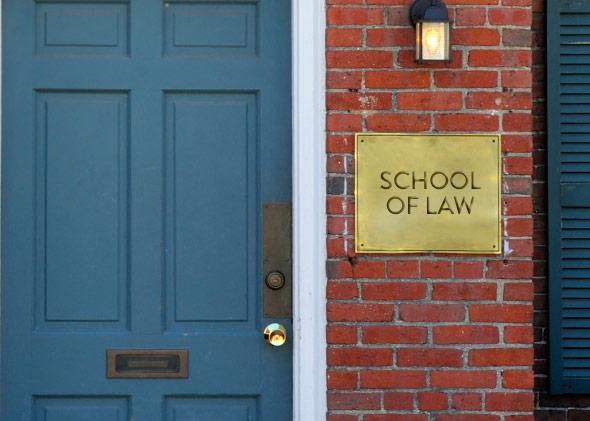Perhaps you thought reporters had exhausted the reservoir of stories about jobless law school graduates struggling to pay off their student loans. Think again! If anything, I’m guessing this depressing genre is about to see a whole second wave.
The first wave came early after the recession, when the massive swell of law students who had matriculated either right before or right after the financial crisis—often choosing schools based on dodgy employment statistics—graduated into a completely barren job market. They were victims of the enrollment boom. Now, the New York Times’ Noam Scheiber brings us some tales from victims of the enrollment bust.
Some background: Law-school applications have collapsed in recent years, thanks partly to the media’s drumbeat about unemployed J.D.s. While some schools, particularly more elite institutions, responded by cutting down their class sizes in order to maintain their academic standards, lots of others chose to admit less-qualified students in order to prop up enrollment and maintain their revenue. Predictably, bar-passage rates have plunged among recent grads, and a number of critics have blamed schools for admitting too many students who simply aren’t equipped to be attorneys, all while loading them up with debt.
Scheiber’s story is a profile of Valparaiso University Law School, a fourth-tier institution that pursued the race-to-the-bottom strategy for a while until administrators realized it wasn’t sustainable, and has now begun cutbacks on its faculty and class size. As Above the Law notes, the piece includes some stunningly candid reflections from a former professor and associate dean, Bruce Berner, who admits that the school sacrificed its standards for the sake of its finances (as a rule, it’s very easy to get law school administrators to talk about how other institutions have done this, but not their own). Scheiber writes:
The committee agonized over whether it should accept fewer students or keep its class size roughly constant and admit weaker candidates. In the end, it opted for the latter, a decision Mr. Berner admits wasn’t entirely on the merits, since fewer students would have meant less revenue.
“There was a lot of pressure, of course, from the central administration to keep the numbers up,” he said. (Mark A. Heckler, the university president, said that admissions decisions were entirely up to the law school but that the financial model was for the school to fund itself.)
And that leads us to people like Sarah Tapia, a Valparaiso grad who idealistically enrolled in law school to help people like her siblings, who’d been “in and out of jail,” but is currently working a low-wage retail job, having failed the bar exam twice. She describes her student debt load as “massive.” She’s determined to pass the bar and start her legal career.
Graduates like Tapia aren’t necessarily the norm these days. With so many fewer J.D.s entering the job market, employment rates are actually up a bit, and at the rarefied top of the industry, salaries for young associates at corporate firms are finally rising after years of stagnation. If you can get into a reasonably decent law school, I’d still argue this is a good time to go. But the more that places like Valparaiso rely on marginally qualified students in order to keep themselves afloat financially, the more stories like Tapia’s we’ll see. The people who suffer are generally going to be the least sophisticated students in the law-school ecosystem, the ones who never really had a chance of graduating with anything other than a big load of debt, and who a lot of schools have shamelessly exploited.
